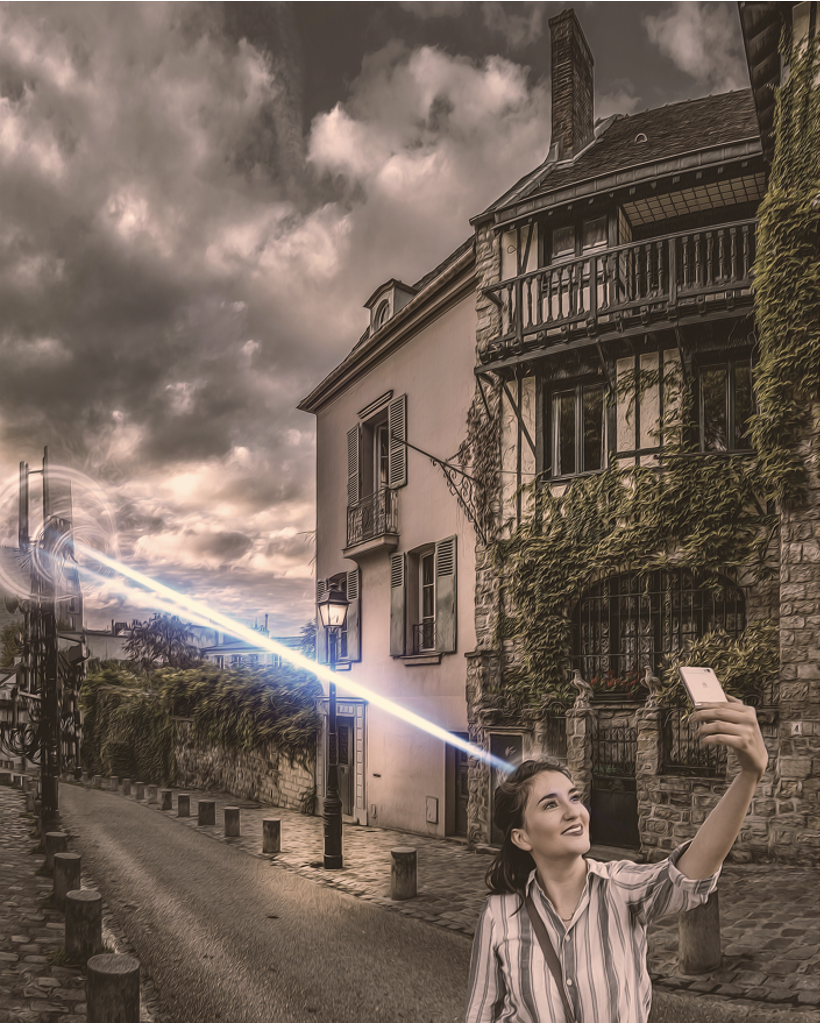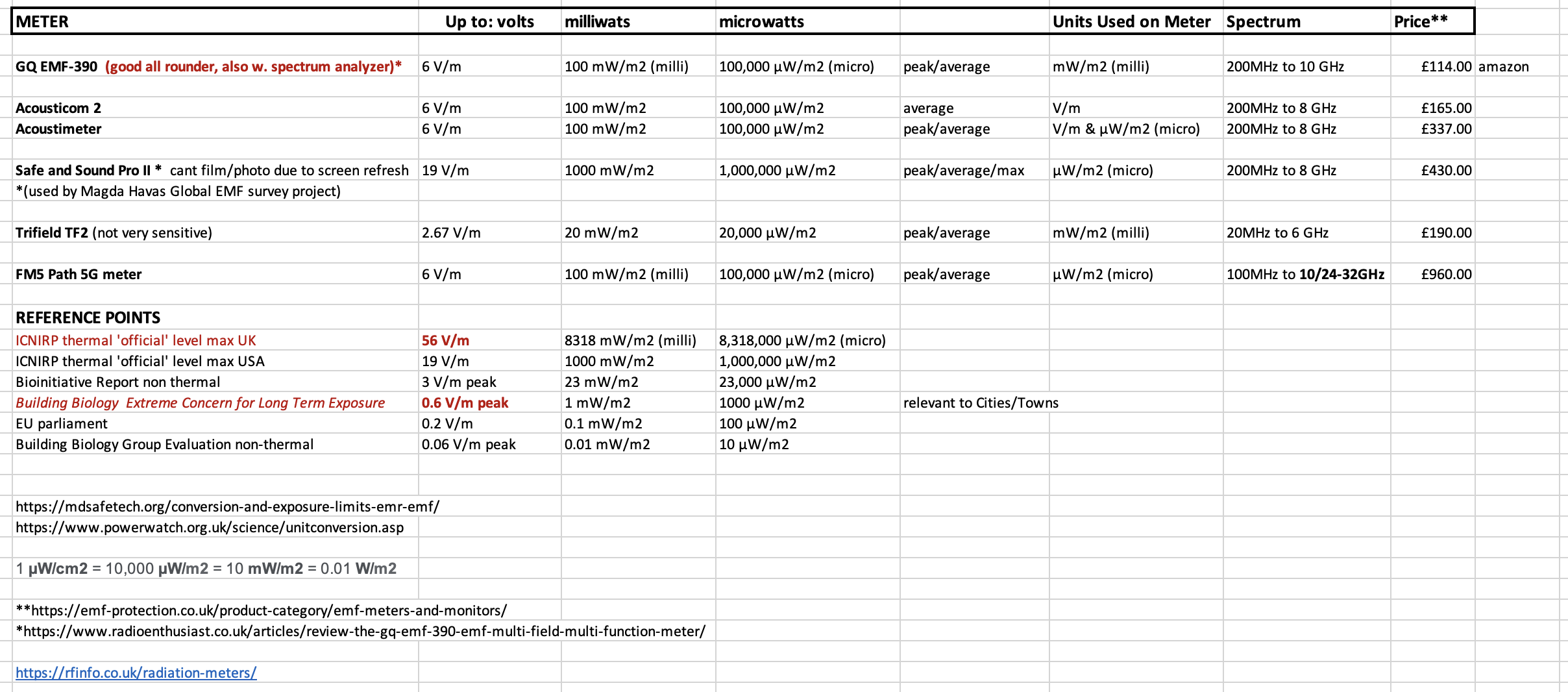As some of us are increasingly becoming aware 5G is an experiment on the population for which there have been no risk assessments and from which, if unchecked, there will be nowhere to escape. The plan is for every square metre of our planet, indeed every “thing”, event, and place, to be connected to the internet via over 100,000 satellites in Low Earth Orbit (LEO) to communicate with terrestrial 5G via millions of User Terminals and hundreds of earth base stations.’ (1) It will be impossible for anyone to go ‘off grid’; for those who are electrosensitive – who, in my opinion, are the canaries in the mine – it will be a living nightmare.
Lennart Hardell’s recent study of the health effects of 5G radio frequency radiation on humans, shows that 5G radiation at levels well below most international and national guidelines causes ill health. The immediate and long-term polluting effects to humans and the environment are extensive. (2) The negative impacts clearly outweigh any benefits, especially when increased connectivity can be achieved by wired-in fibre optic, which is a safe alternative.
You may be wondering either why governments worldwide are racing ahead with the 5G rollout and the involuntary radiation of the whole…population or what can we do to halt this madness?

Follow the money…
In some respects, our biggest challenge is changing the mindset of the general public who for the most part have been convinced that 5G is the solution we have been waiting for, enabling them potentially to upload pictures of their pets a few seconds faster or watch movies while at the beach, with the ensuing dopamine hit. While the telecom industry and governments worldwide have been rushing headlong into implementing the plan for The Great Reset, with its intrinsic AI, Smart Cities, Internet of Things, Internet of Underwater Things, Internet of Bodies, Metaverse, to name but a few, there are some interesting angles to be explored. While potential health concerns may have a more obvious connection, here’s one that people may not be at all aware of…
5G masts’ impact on house prices
House buyers are savvier than ever and the surrounding area is pivotal when making a purchase. If there is any possibility that something in the vicinity could impact negatively on health, why take the chance? Having sunk a major chunk of their finances into their biggest ever purchase, it must be daunting to discover that it may be difficult to re-sell in the future for reasons they may not have anticipated. This strongly echoes the fate of those unfortunate enough to have problems selling a flat in a block which has cladding. This has all the hallmarks of a Grenfell tower-type scandal in the making.
As we know, many people only become seriously concerned about an issue if it has, or is likely to, affect them personally, so this might be a way to encourage them to think again. Perhaps some are realising that 5G is not everything that we are being told it would be (3).
Health issues are clearly a concern but people are also mindful over having a 20-metre mast positioned near their home. It’s an eyesore and is not particularly appealing to anyone who is looking to purchase a property, which may also be why prices are being driven down.
A survey in Realtor magazine in the US, found that “an overwhelming 94% of home buyers and renters polled by the National Institute for Science, Law & Public Policy (NISLAPP) said they were less interested and would pay less for a property located near a cell tower or antenna. Also of the 1,000 survey respondents, 79% said that under no circumstances would they ever purchase or rent a property within a few blocks of a cell tower or antennas. In fact, almost 90% said they were concerned about the increasing number of cell towers and antennas in their residential neighbourhood”. According to the New Zealand edition, buyers there would pay as much as 20 percent less for a property near a cell tower or antenna. (5).
Some light research in the UK shows several online news outlets reporting a negative impact of 5G on house prices. This includes the likes of Manchester Evening News, Bolton News and This Local London.
In Manchester, Councillor Paul Heslop had immediate concerns. At 20 metres in height, the proposed mast is twice the height of the surrounding properties and literally hundreds of properties are situated within a couple of hundred metres of the proposed mast.”
In London, one resident said: “It will be right in front of my house – 16 metres away. Every time I open my windows, I will see the mast and four large cabinets.”
Furthermore, Conservative MP Damien Moore has written to Sefton Council’s Planning Committee, expressing concerns about a 5G mast that has been proposed to be built in Sale. (3)
Meanwhile the topic and safety of purchasing a house near a mast merited a thread on Mumsnet. (4)
Since we in the UK are such keen homeowners, this aspect of the effect on property values should be made clear. It’s another way to show just how deadly 5G can be not just to our health but also to people’s pockets.
Who’s going to pick up the tab?
Already “Lloyds of London, one of the world’s premier insurance groups, is refusing to insure health claims made against wireless technologies. Other insurance companies are following suit. If you follow the money, this is HUGE.” (5) If all this smart technology and infrastructure is so safe, why would the big players in insurance be leaving money on the table?
And for those who’ve already agreed to telecoms infrastructure on a site you own, the originally contracted payments could be slashed. Telecoms companies have already used rights under the 2017 Electronic Communications Code to demand dramatic rent reductions of up to 90% from the owners of land or buildings on which infrastructure is located, hurting thousands of small businesses and individuals at a time when many are already facing hardship… These demands have often been followed by threats of court action that small property owners are ill-equipped to fight. And now they are demanding changes to the Communication Code that would give them even greater rights by removing the limited legal protections landowners are currently entitled to.” (9) Worse still, operators are often allowed onto land 24/7 which not only can cause damage to crops or property but also violates land owners’ privacy.
We need to raise public awareness
5G is still relatively new but the research and evidence are clearly stacking up against its use. It can now be shown to not only cause health problems but also other significant disadvantages to those living near a mast. This provides an opportunity to convince people that there is no real reason why the technology should be used at all and plenty of reasons why not.
Regarding the uninisurability of this technology, some of us have tactfully pointed out to our local councils that the possible consequential risks a council might face are very pertinent in these financially stretched times.
We’re no doubt all doing our bit to raise awareness about the importance of standing up for our Freedom, yet it seems that the dangers of RFR are often overlooked. It takes just a few minutes to copy and paste letter templates and email them to local government, whose job it is to protect their constituents from harm; likewise, templates for the wording for objecting to masts can be used easily while leaflets can be printed and put through the doors of residents living close to them (11). Awareness needs to be raised about these issues and simple actions can be effective. We can make our voices heard and we must.
For more simple actions you can encourage people to take, see Take Action – RFInfo
References:
- Microwaving Our Planet – Safe Tech International
- First Study so Far: 5G Causes the Microwave Syndrome Lennart Hardell et al, 22 Feb. 2022 Swedish Radiation Protection Foundation, 22 Feb. 2022 https://ehtrust.org/study-5g-causes-microwave-syndrome/
- https://www.totaltele.com/513677/Brits-remain-frosty-about-the-benefits-of-5G
- https://ehtrust.org/cell-phone-towers-lower-property-values-documentation-research/
- https://magazine.realtor/daily-news/2014/07/25/cell-towers-antennas-problematic-for-buyers
- https://www.liverpoolecho.co.uk/news/liverpool-news/tory-mp-objects-5g-mast-18643779
- https://www.mumsnet.com/Talk/property/3734531-Would-you-buy-a-house-directly-opposite-a-5G-mast
- https://strangesounds.org/2019/04/5g-health-insurance-companies-catastrophe.html
- https://www.thescottishfarmer.co.uk/news/19116915.protect-connect-wants-help-landowners-telecoms-mast-sites/


